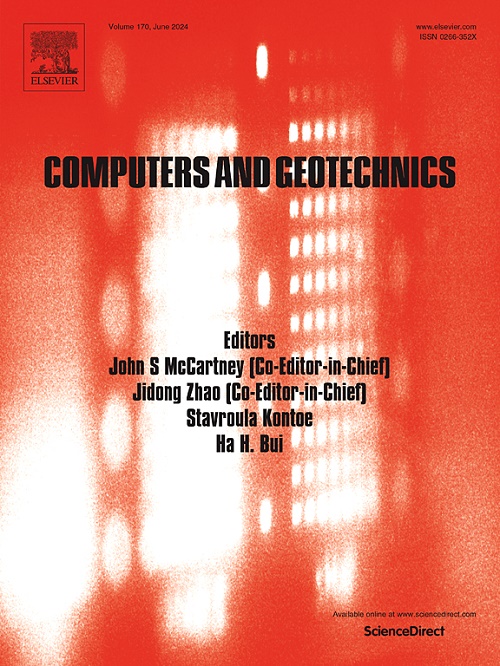土结构相互作用下空间解耦高精度人工边界范围确定的创新策略
IF 6.2
1区 工程技术
Q1 COMPUTER SCIENCE, INTERDISCIPLINARY APPLICATIONS
引用次数: 0
摘要
合理确定土-结构相互作用的高精度人工边界范围是准确模拟辐射阻尼条件的关键步骤。通常,通过将边界定位在尽可能远离近场域的位置来消散向外散射波。然而,大尺度SSI功率响应受限于时空耦合特性,特别是缺乏定量评估人工边界空间耦合状态的策略。为此,本文提出了一种利用相对增益阵列(RGA)以平均耦合度评价空间耦合的新策略,实现了人工边界空间解耦范围的自动确定。采用薄层法(TLM)和尺度边界有限元法(SBFEM)验证了其正确性和适用性。讨论了适用于核动力结构-土相互作用的人工边界空间解耦范围,并研究了远场动力刚度矩阵空间分块解耦方法的可行性。结果表明,所采用的解耦方法在保持计算精度的同时显著降低了存储成本。本文章由计算机程序翻译,如有差异,请以英文原文为准。
Innovative strategy for determining the spatial decoupling high-precision artificial boundary range under soil structure interaction
Reasonable determination of high-precision artificial boundary range in soil-structure interaction (SSI) is a critical step for accurately simulating radiation damping condition. Typically, outgoing scattering waves are dissipated by locating the boundary as far from near-field domain as possible. However, the large-scale SSI power response are limited due to the spatiotemporal coupling characteristics, especially the lack of a strategy to quantitatively assess the artificial boundary spatial coupling state. To this end, this study proposes a novel strategy for evaluating the spatial coupling in terms of the mean coupling degree using the relative gain array (RGA), which realizes the automatic determination for artificial boundary spatial decoupling range. The correctness and applicability are verified using the thin layer method (TLM) and the scaled boundary finite element method (SBFEM). Moreover, the artificial boundary spatial decoupling range applicable to the nuclear power structure-soil interaction is discussed, and the feasibility of the spatial partitioning decoupling method for the far-field dynamic stiffness matrix is investigated. The results show that the adopted decoupling method significantly reduces the storage cost while maintaining the calculation accuracy.
求助全文
通过发布文献求助,成功后即可免费获取论文全文。
去求助
来源期刊

Computers and Geotechnics
地学-地球科学综合
CiteScore
9.10
自引率
15.10%
发文量
438
审稿时长
45 days
期刊介绍:
The use of computers is firmly established in geotechnical engineering and continues to grow rapidly in both engineering practice and academe. The development of advanced numerical techniques and constitutive modeling, in conjunction with rapid developments in computer hardware, enables problems to be tackled that were unthinkable even a few years ago. Computers and Geotechnics provides an up-to-date reference for engineers and researchers engaged in computer aided analysis and research in geotechnical engineering. The journal is intended for an expeditious dissemination of advanced computer applications across a broad range of geotechnical topics. Contributions on advances in numerical algorithms, computer implementation of new constitutive models and probabilistic methods are especially encouraged.
 求助内容:
求助内容: 应助结果提醒方式:
应助结果提醒方式:


